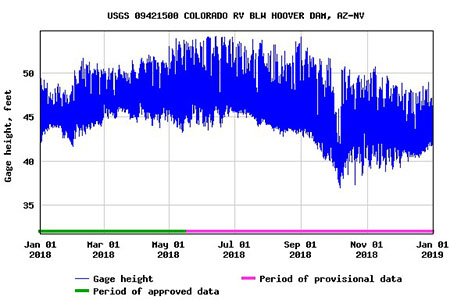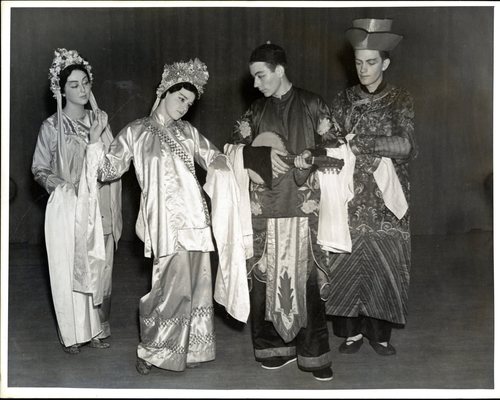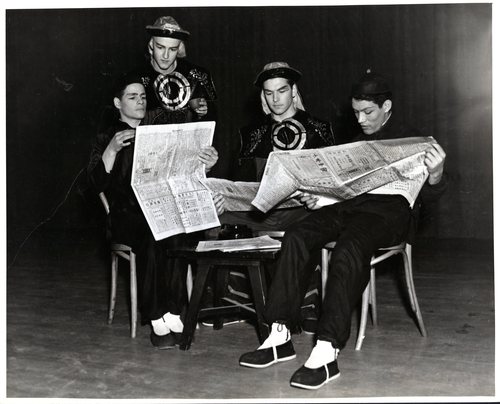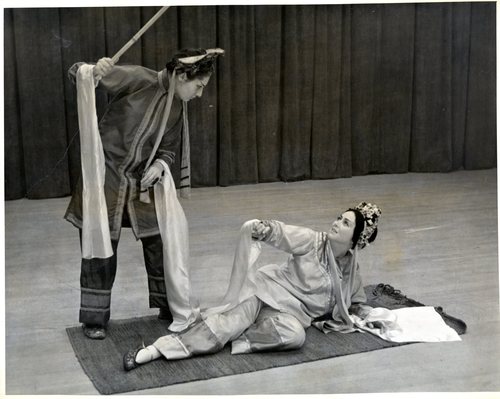Back with the outdated computers of the libraries, these suffering creatures are about to be burdened even more. With the terminal condition of low HDD, these machines can barely function properly without life-support systems in the form of physical servers to help them handle the increasingly complex tasks from updated software. However, just like a camel’s back, even moderately sized servers can’t hep these computers keep up with carrying the continuously growing number of clogged files. Only when these poor units were about to give out that their owners decided to hook them up with fancier aid, the cloud. However, the damage is done and due to their falling health, they may soon be, well, disconnected.
Thirteen
This week I have worked on scanning the Bear Valley Mutual
Water Company Reports. Thus far, I have opened box number 13, which may not
mean much to some – except if 13 makes you nervous! For me, everything has been
going well so far and I am hoping to finish scanning the content of this box
before the end of the week. After all in Italy, 13 is considered to be a lucky
number. Fare tredici! It means to do 13 and hit the jackpot!
References
Fallen Angel on the Run: https://fallenangelontherun.com/2018/09/08/fare-tredici/
Normal
0
false
false
false
EN-US
X-NONE
X-NONE
/* Style Definitions */
table.MsoNormalTable
{mso-style-name:”Table Normal”;
mso-tstyle-rowband-size:0;
mso-tstyle-colband-size:0;
mso-style-noshow:yes;
mso-style-priority:99;
mso-style-parent:””;
mso-padding-alt:0in 5.4pt 0in 5.4pt;
mso-para-margin-top:0in;
mso-para-margin-right:0in;
mso-para-margin-bottom:10.0pt;
mso-para-margin-left:0in;
line-height:115%;
mso-pagination:widow-orphan;
font-size:11.0pt;
font-family:”Calibri”,”sans-serif”;
mso-ascii-font-family:Calibri;
mso-ascii-theme-font:minor-latin;
mso-hansi-font-family:Calibri;
mso-hansi-theme-font:minor-latin;}
Bluff Lake
Mutual Water Company files and as I was going through the documents I noticed
the word, “Bluff Lake.” As usual my imagination ran wild visualizing a lake
which really did not exist. Or did it?
lakes in Big Bear! It is open from the beginning of May until the beginning of
November. The lake was the filming location for Dr. Dolittle 2! It is an ideal
spot to spend a day far from the madding crowd.
James S. Edwards, trustee of Pomona College, bought the property for $1,100.
Edwards sold the property four years later to Pomona College for $10! Pomona
College owned the Bluff Lake until the 1940s.
Normal
0
false
false
false
EN-US
X-NONE
X-NONE
/* Style Definitions */
table.MsoNormalTable
{mso-style-name:”Table Normal”;
mso-tstyle-rowband-size:0;
mso-tstyle-colband-size:0;
mso-style-noshow:yes;
mso-style-priority:99;
mso-style-parent:””;
mso-padding-alt:0in 5.4pt 0in 5.4pt;
mso-para-margin-top:0in;
mso-para-margin-right:0in;
mso-para-margin-bottom:10.0pt;
mso-para-margin-left:0in;
line-height:115%;
mso-pagination:widow-orphan;
font-size:11.0pt;
font-family:”Times New Roman”,”serif”;}
Los Angeles’s Metropolitan Aqueduct in Progress
Environmental Historians Must Translate Data System Graphs, Such as These
courses, after carving through the Earth like how the Colorado has done to the
Grand Canyon, don’t change coordinates within the span of a century. They can,
however, change flow and rate, either naturally or synthetically through the
construction of dams and irrigation maneuvering. Environmental historians may
find charts such as this one below, worth more than just the values of their
numbers. When measuring the effects of water management on an environment it is
important to consider the previously recorded flow of a river, versus the
current recorded outputs from today. Not only do environmental historians have
to work with scientifically recorded data, to glean said data they must keep up
with the changing technologies over the years as well.
Normal
0
false
false
false
EN-US
X-NONE
X-NONE
/* Style Definitions */
table.MsoNormalTable
{mso-style-name:”Table Normal”;
mso-tstyle-rowband-size:0;
mso-tstyle-colband-size:0;
mso-style-noshow:yes;
mso-style-priority:99;
mso-style-parent:””;
mso-padding-alt:0in 5.4pt 0in 5.4pt;
mso-para-margin-top:0in;
mso-para-margin-right:0in;
mso-para-margin-bottom:8.0pt;
mso-para-margin-left:0in;
line-height:107%;
mso-pagination:widow-orphan;
font-size:11.0pt;
font-family:”Calibri”,sans-serif;
mso-ascii-font-family:Calibri;
mso-ascii-theme-font:minor-latin;
mso-hansi-font-family:Calibri;
mso-hansi-theme-font:minor-latin;}
Understanding the flow of water…
“The West Chamber”
As highlighted in a previous blog post, John Laurence Seymour’s
production of A Protegee of the Mistress constituted the first
production of that particular play in the United States. Nine years after that
performance Seymour picked another play to perform for the first time in the
United States. For the first time ever, the English-language production of
The West Chamber took stage in 1938. Touted as a “Chinese
Classic” in local newspapers the show included meticulous research on
traditional Chinese stage-makeup, props, and staging in order to faithfully
re-stage the production in the United States. However, one glaring issue with
the production is that the entire cast was white. Actors donned makeup which relied
on thick black eyeliner to create sharp, angled eyebrows and also to create the
illusion of almond-shaped eyes. This heartily begs the question, is this considered
an example of “yellowface”? A significant effort was made by Seymour
to share his appreciation of Chinese culture and to teach both actors and the
audience about traditional Chinese Theater (see program notes included
below). Far from creating a caricature of Chinese peoples and cultures,
the production seemingly constituted a faithful recreation of the play originally
written in 1250AD by the Chinese playwright, Wang Shih Fu. Regardless of good
intention though, it is hard to forget the fact that the Chinese Exclusion Act
would not be repealed until 5 years after this production.
One year prior to this production, the Hollywood movie version
of The Good Earth was released. Set
in Northern China during the years leading up to WW1, the film follows a
Chinese farming family and their numerous struggles. Even though Asian-American
movie star, Anna May Wong had been considered for the main role, she never received an offer for the part because of the white, male lead, Paul Muni. Due to anti-miscegenation rules in Hollywood during that time, any actress
playing Muni’s wife also had to be white. Due to these kinds of laws and
ever-present racism, it became basically impossible for Asian’s and
Asian-Americans living in the United States to tell their own stories in any
kind of theater.
A Touch of Flare
I
have always been fascinated by abbreviations. Abbreviations are kind of cool;
they are like placards with a touch of flare. I got this one thrown at me
the other day: HMU. At first I didn’t know what to make of it but thanks to
Google I was able to get down to the bottom of it. It says Hit Me Up! As
I was scrolling down pages of the San Antonio Water Company History, Inventory
and Appraisal report, I came across a list of abbreviations which I found to be
really cool. Try to see if you can get them right. The correct answers are in
the image below.
stg.
the meantime, DFTBA! (Don’t forget to be awesome!)
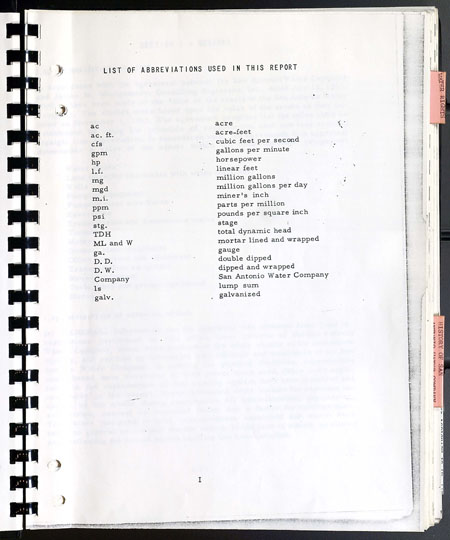
Megastorm in Southern California
Rich History
skimming through the San Antonio Water Company History, Inventory and Appraisal,
I came across a little incident with big implications on the history of SoCal. This incident is called “the Battle
of Chino” which was more like a minor skirmish between Spanish-speaking
Americans and Californios loyal to
the Mexican government. In fact, the Battle of Chino became the first step
towards the capture of California by American forces. The general location of the Battle of Chino is located on Eucalyptus Avenue near the 71 in today’s Chino Hills.
had established a village-like
clustering around the land mass we know as Red Hill. I am always amazed at the rich history
of California.
References
The
Battle of Chino: https://www.jstor.org/stable/41168019?seq=1#metadata_info_tab_contents
Back
in the Day: The Battle of Chino https://www.pe.com/2014/10/12/back-in-the-day-the-battle-of-chino/
History
of Rancho Cucamonga https://www.cityofrc.us/cityhall/planning/hpp/history.asp
Normal
0
false
false
false
EN-US
X-NONE
X-NONE
/* Style Definitions */
table.MsoNormalTable
{mso-style-name:”Table Normal”;
mso-tstyle-rowband-size:0;
mso-tstyle-colband-size:0;
mso-style-noshow:yes;
mso-style-priority:99;
mso-style-parent:””;
mso-padding-alt:0in 5.4pt 0in 5.4pt;
mso-para-margin-top:0in;
mso-para-margin-right:0in;
mso-para-margin-bottom:10.0pt;
mso-para-margin-left:0in;
line-height:115%;
mso-pagination:widow-orphan;
font-size:11.0pt;
font-family:”Times New Roman”,”serif”;}


